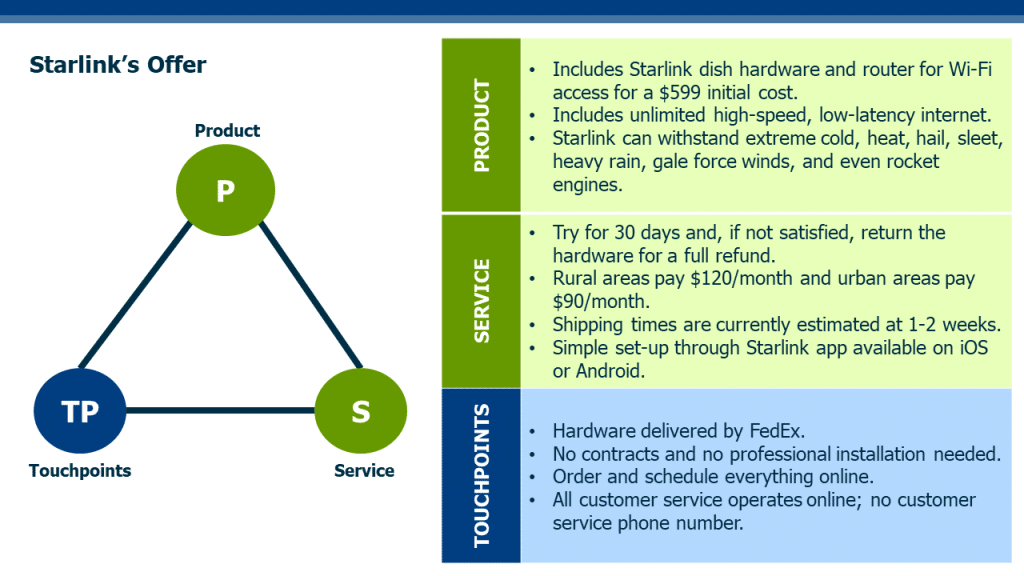Surging demand and supply chain disruptions during the pandemic led many companies to take an aggressive approach to pricing. Suppliers were able to implement price increases relatively easily in a tight and highly uncertain market. Customers accepted that the value of their purchases had increased as alternatives were either not available or more expensive than before. Now, as markets cool, customers are taking a harder look at their supplier’s value proposition – not only the price itself, but also the “promise” of the offer.

Photo of Starlink website details from https://www.starlink.com/
Is the supplier’s offer different and compelling in a way that matters to the customer? Does it create the value it promises? B2B Marketing leaders need to pressure test the alignment for their pricing strategy with their existing value propositions of their most important brands, offers and customers.
Offer Example
Elon Musk’s Starlink presents a cautionary tale. To maintain share in urban markets where there is more competition, Starlink decreased its monthly price. In rural markets where there is less competition, and to make up for lost profitability in the urban markets, Starlink increased its monthly price. According to CNET, “Per an email recently sent to customers, Starlink announced its monthly service will increase by $10, to $120 per month, for customers in areas with limited capacity, and will decrease by $20, to $90 monthly, for those in areas with excess capacity.”
Historically, Starlink attracted new rural customers with the value proposition that they would receive the same great internet services (such as uninterrupted bandwidth) as urban customers and enjoy the services at the same price – which is a very good example of a compelling, segment specific value proposition.
Starlink’s recent price changes have broken that promise and may have damaged the brand in a priority target segment. Rural customers are leaving Starlink and new account sign-ups from rural areas are not meeting Starlink internal objectives per the article.

When making significant price changes, it’s important to consider the original value proposition used to attract and retain an individual account or customer segment. The Starlink example shows that a short-term pricing move can inadvertently alienate a target segment; and, over the long-term, that segment’s relationship with the supplier may move from “partner” to “transactional supplier” where price becomes the dominant purchase criteria.
To understand, document, and communicate compelling value propositions, inquire about Market Edge’s approach to developing segment specific Value Propositions. Market Edge tools for Value Pricing, Customer Segmentation, and Targeting are also available. Fill out the form below to learn more and talk with a Senior Consultant.
